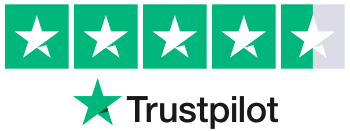

Your website’s traffic defines the success ratio of making a sale and states your site’s quality. A more significant number of visitors to your site leads to greater sales.
Therefore, you must increase your site’s reach in search engine rankings to generate better traffic. That is where search engine optimisation comes in.
Search engine values unique and error-free content. So, make sure to maintain uniqueness in your content to stand out and bypass the competitors in making a sale. In addition, you can do many other things to optimise your website for search engines, which will be discussed in this article.
Table of Contents
Why is SEO Important for a Website?
Search engine optimisation is not one single strategy. It is a collective effort to make your site rank higher against specific keywords. Now a critical factor in this ranking game is the quality of content.
SEO is essential because people are more focused on the search results that appear on the first page of the Google search engine page results.
Most users consider results on the first page more credible than the rest of the SERPs. That is why it has become essential for businesses to secure the top spots.
Online business is all about who makes the sale first. If the site appearing on the top of the first page in SERPs makes a sale, the lower-ranking site may have to apply search engine optimisation to rank higher.
Step-by-Step Guide to Optimise Website for Search Engine
Search engine optimisation focuses on technical elements that help fulfil the search engine’s ranking requirements. The step to optimise your website for search engines are mentioned below.
Step #1: Begin With Keyword Research
The first thing you need to do is to perform in-depth keyword research that can lead to creating quality content. It would be best to start with the primary keyword related to your targeted niche or category.

There are various tools like Google Keyword research that can help you to manage the right set of keywords that are relevant to your topic.
Using the primary keyword, you can develop long tail, short tail, and LSI keywords. Keywords are the building blocks of your content and help your site appear against the user’s query.
To help you with your keyword research, we will mention some type of keywords as well as their ‘pros’ so that you can get started with making a good strategy.
Short-Tail Keyword
Short-tail keywords are those that consist of one or two words. They generally have a lot of competition since they are general and not very specific. It is usually recommended to include only a couple of these in your strategy, especially if your brand is in the starting phase. That is because they can require a lot of effort to rank against in search engines. For example, if we take the word ‘SEO’, this is how difficult it is to rank for:

Long-Tail Keyword
Long-tail keywords are, as the name indicates, such keywords that consist of around 3 to 4 (or even more) words.
They are usually more specific than short-tail keywords. Some long-tail keywords are specific to a particular location or a particular field. These are generally easier to rank for since they don’t have a lot of competition. For example, you can see that the variant ‘SEO services in Chicago’ has lesser difficulty than the broad keyword ‘SEO’.

LSI Keywords
LSI keywords are the words that are recognised by Google to be related to the main keywords. Adding these types of keywords can help Google understand the relevancy of your content, which can subsequently help it in ranking high in the SERPs.
Step #2: Maintain a Structure
The structure is not only here to aid the readability experience. But it also helps the search engine crawler to go through your webpage’s contents more easily.
Therefore, maintaining a proper structure for your site is recommended by using the relevant heading tags (H1, H2, H3). Making a structure is more like outlining your blog post. You must adjust the focus keyword in your site’s title, meta description, and H2 to optimise it well.
It is pretty apparent that you have to adjust the long tail and short-tail keywords throughout the content. However, avoid keyword stuffing by maintaining the density of keywords in your content. Placing too many keywords in one paragraph is a bad practice and can ruin your SEO efforts.
Step #3: Create Unique Content
Once you have completed your keyword research, the next step is to create quality content that stands out from the information shared by the competitors.
The best method to create unique content is by starting with your research. Read as much material as possible to have proper knowledge of the topic.
The next step is compiling this information in your own words by paraphrasing the material as your content. Paraphrasing technique is highly recommended if you want to avoid plagiarism and maintain readability in your content.
By applying the paraphrasing technique in your content, you can apply the same idea in different words. If you find that manually paraphrasing your content is too time-consuming, you can take the help of an online paraphrasing tool.
Let’s do a demonstration to show this point better. We will paraphrase some sample text using Paraphraser.io to show how it makes the changes.
Original Text: The strange man was drinking tea which was very harmful due to being a powder and not actual milk. He had kept some cows in his home where he could easily get fresh milk.
Paraphrased Text: The tea the stranger drank was powdered and not real milk, which was very harmful. He had several cows in his home, so fresh milk was readily available.

Step #4: Add Internal and External Links
The linking strategy is essential to optimise your site for search engines. In addition, internal linking makes it easier for the audience to navigate through your website.
It is also beneficial if you want to promote your older content through freshly posted webpage material. Internal linking helps to keep the audience engaged with your website, which helps to generate more traffic online.
External linking is beneficial if you want to provide more valuable content to your users. External links can lead your audience to a more credible source that contains content similar to your site’s.
Plus, external links can make your content look more authoritative. You can add links to reliable websites when mentioning statistics so that they look like they’re backed by proper research.
Step #5: Add Optimised Images
Graphical content makes the site more engaging and interactive for visitors. Most of the time, the audience may visit your website based on the infographics or featured images you have posted online.
For creating an optimised image, make sure to add alt text to your images, including the focus keywords. Alt text-optimised images can also secure a better chance of ranking among Google image search results.
Images can also provide value to your content in terms of guidance. Attaching screenshots with arrows or boxes is recommended for better guidance for your audience.
However, when adding images, you should take care to add only those that are relevant to the topic you’re discussing. Adding irrelevant images can harm the quality of your content than raise it.
Step #6: Check for Plagiarism
Last but not least, part of website optimisation is running a plagiarism check. A search engine has stated in its ranking policy to prioritise unique content in terms of ranking. On the other hand, plagiarised content can get penalised, which is not suitable for SEO.
Therefore, make sure to do a plagiarism check on your webpage content to have the confidence of ranking among the top spots of SERP. By checking plagiarism, you can also avoid the search engine penalty by ensuring that your webpage publications are different from the other online media.
There is another benefit that you can get by checking for plagiarism in your content. If there is any text in your content that is matching from an online source, you can copy the URL and use it to create a citation. Then, you can add the citation in front of the ‘plagiarised’ parts. Some tools even provide this feature on their own, i.e., you can use an in-built citation generator to come up with the required citations.
Conclusion
Website optimisation is necessary to generate leads and conversions in today’s competitive market. The same goes for online businesses and e-Commerce platforms which have to compete in sales.
No matter what type of website you have, search engine optimisation is necessary to secure a better ranking in search engine page results.
This article elaborated on how to optimise your website for search engines with a complete step-by-step guide. We hope our guidelines were easy to understand for applying the optimisation strategies.
When optimising your content, you should always keep in mind to do it for the readers as well as the search engine. Focusing on any of the two can be detrimental to the overall quality.
















0 responses on "How to Optimise Your Website for Search Engines? A Beginner's Guide"